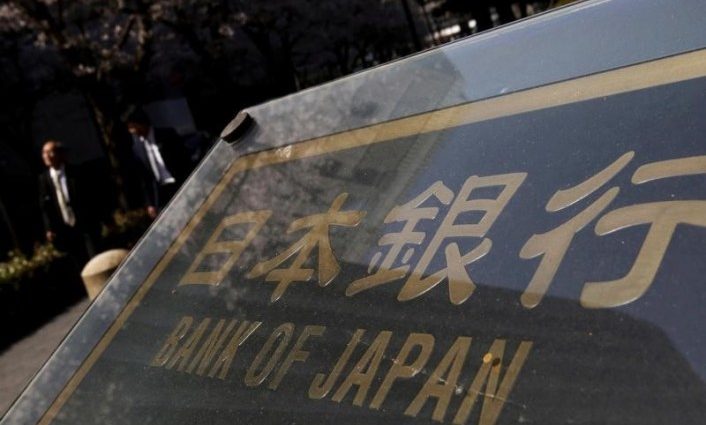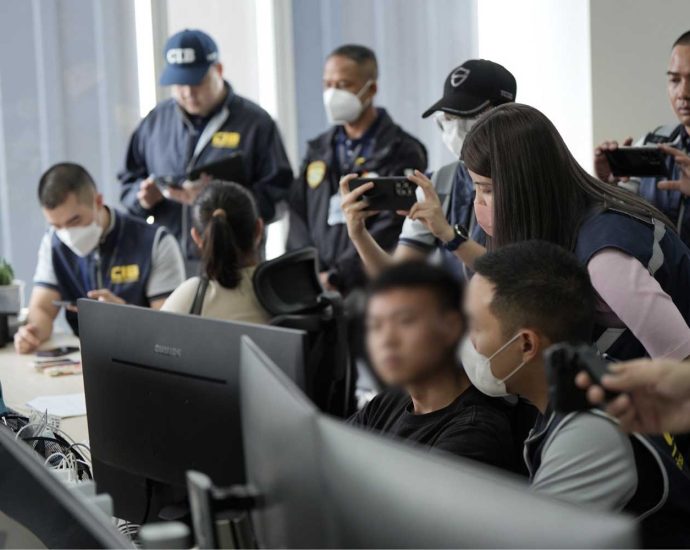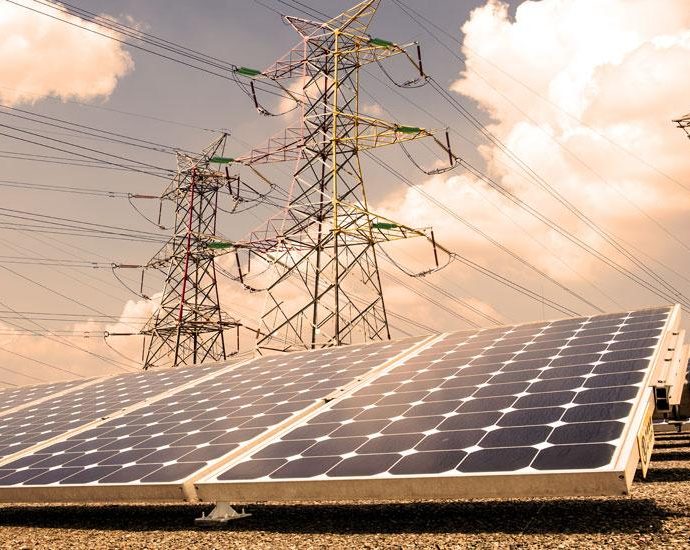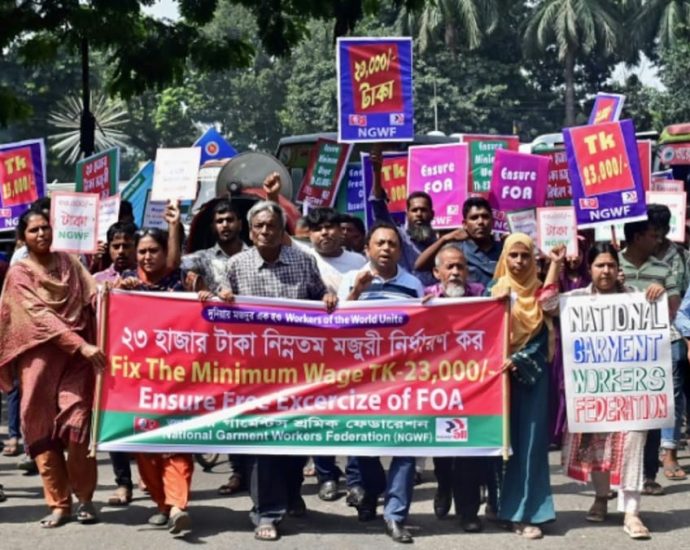Japan reminds world why it’s stuck in QE quicksand
TOKYO – The Bank of Japan bowed to financial realpolitik Tuesday (October 31) by allowing bond yields to top 1%. But Governor Kazuo Ueda remains tethered to a level of policy unreality sure to keep the yen under strong downward pressure.
Ueda’s step was the tiniest the BOJ could have gotten away with without shoulder-checking global markets. It means far less than currency traders may think in terms of when and how Japan might exit a 23-year-old quantitative easing (QE) experiment.
The BOJ meeting “ended up somewhat confusingly but largely dovish leaving the yen still vulnerable to a further sell-off versus the dollar,” says Gary Dugan, chief investment officer at Dalma Capital.
In fact, the events of the last month might have ensured that Ueda’s team remains stuck in the QE quicksand longer than markets appreciate.
Since taking the helm in April, Ueda has been testing markets’ readiness for BOJ “tapering.” It hasn’t gone well so far. A move in late July, for example, to let 10-year bond yields rise from 0.5% to 1% sent the yen higher than Tokyo expected.
In the weeks that followed, the BOJ executed countless large and unscheduled bond purchases. That signaled to traders that the July tweak was inevitable given the surge in US yields to 17-year highs and that overall BOJ rate policies hadn’t changed. It was similar to the one-step-forward-two-steps-back maneuver the BOJ pulled off in December.
Tuesday’s tweak is more of the same. As US rates continue drifting upward, causing extreme tensions between dollar and yen rates, the BOJ has no choice but to adjust. After all, it remains to be seen how many more US tightening moves are in store for global markets. News that US gross domestic product (GDP) rose at a 4.9% annualized pace in the third quarter upped the odds the Federal Reserve will keep hiking rates.
Yet Ueda’s challenge grew markedly bigger this month for other reasons, too. One is the sudden explosion of violence in the Middle East. The Hamas-Israel war threatens to accelerate increases in oil prices, adding to inflation risks caused by Russia’s 2022 Ukraine invasion. Japanese inflation is running the hottest in three decades at close to 3% year on year.
Significantly, the BOJ raised its inflation forecast to 2.8% from 2.5% for fiscal 2023. For 2024, price expectations have been raised to 2.8% as well.
But even as commodity price surges warrant tighter policies, China’s economic downshift is pulling BOJ priorities in the other direction. In October, mainland factory activity slid back into contraction, while the services sector slowed more than expected.
The manufacturing purchasing managers index dropped to 49.5 from 50.2 in September. Non-manufacturing activity fell to 50.6 from 51.7.
“China’s economic activity fell to an extent, and the foundation for a continued recovery still needs to be further solidified,” says Zhao Qinghe, senior statistician at China’s National Bureau of Statistics. Economist Raymond Yeung at Australia & New Zealand Bank adds this “downside surprise” means Beijing “will still need to deliver growth-supportive policy.”
As Japan’s top trading partner stumbles, exporters are bracing for a rough 2024. That’s dimming hopes that Japan Inc might boost wages, kicking off a virtuous cycle of income and consumption gains.
As headwinds mount, Prime Minister Fumio Kishida’s government is rushing to roll out fresh stimulus. They include proposals for tax cuts for the middle class, reduced corporate levies and cash handouts to households facing higher inflation.

The large and growing price tag for fiscal initiatives could increase pressure on the BOJ to add more, not less, liquidity. Otherwise, government bond yields might surge, adding to financial pressures on banks and households.
Yet Kishida’s latest proposals complicate Ueda’s options in another way. By shoveling fiscal money to fill economic holes, the ruling Liberal Democratic Party is treating the symptoms of Japan’s troubles, not the underlying ailments.
As inflation spikes higher, Kishida’s approval ratings are plummeting, currently around 29%, to the lowest of his two years in power. Hence the rush to ramp up fiscal stimulus efforts.
Missing, though, are proposals to raise Japan’s political game. When he took power in October 2021, Kishida pledged to implement a “new capitalism” plan to spread more equitably the benefits of economic growth.
Part of the strategy was addressing the unfinished business from the “Abenomics” era, reference to Shinzo Abe’s 2012-2020 premiership, the longest in Japan’s history.
Abe promised a supply-side revolution the likes of which modern Japan had never seen. It included moves to loosen labor markets, reduce bureaucracy, boost innovation and productivity, empower women and restore Tokyo’s place as Asia’s premier financial center for multinational companies and stock listings.
Mostly, Abe leaned on the BOJ to supersize QE. In March 2013, he hired Haruhiko Kuroda as governor to turbocharge an experiment that the BOJ pioneered in 2000 and 2001.
Within five years, Kuroda’s binging on bonds and stocks pushed the BOJ’s balance sheet above $4.9 trillion, topping Japan’s annual GDP. A resulting plunge in the yen boosted exports, juicing the stock market and generating record corporate profits.
Yet Abe’s team put very few reform wins on the scoreboard. Other than steps to strengthen corporate governance, the Abe era failed at nearly every turn to recalibrate growth engines, level playing fields and give chieftains confidence to fatten paychecks.
One big concern is that Tokyo’s same-old-same-old policy approach has lost potency over time. Economist Sayuri Shirai at Keio University notes that, this time a falling yen isn’t altering Japan’s export and trade deficit dynamics like in the past. Industrial production and corporate investment also “remain sluggish,” says Shirai, a former BOJ policy board member.
“While the government’s revenue is increasing due to inflation-induced income and consumption taxes, this is essentially a tax hike,” she explains. “Wage growth has not caught up with the rate of inflation. Given rising government and corporate debt, a rapid interest rate hike is likely to cause significant stress to the economy.”
But weak exchange rates leave Japan uniquely vulnerable to surging energy and food prices. This dynamic is colliding with a domestic economy that might not be ready for a shift away from ultraloose monetary policy. One big worry: the risk of a Silicon Valley Bank-like blowup amongst Japan’s 100-plus regional lenders.
Worries about another SVB abound in the US, too. As Fed Chairman Jerome Powell’s team mulls another rate hike — perhaps as soon as November 1 – investors are scouring the financial landscape for the next bank that might buckle under the pressure of rising US yields.
A relentlessly strong dollar is also raising default risks in Asia, particularly in China. It’s making offshore debt harder to manage.
“The greenback continues to draw smaller benefits from strong US data and high rate advantage than it should, likely due to its overbought status, but upside risks remain predominant,” says Francesco Pesole, an analyst at ING Bank.
Analyst Adam Button at ForexLive says the constant threat that Japan’s Ministry of Finance might intervene to support the yen is capping the dollar’s gains – at least for now. But the dollar, Button notes, “should be stronger than it is this week, and I think it’s just a matter of time until it materializes.”
In general, though, traders need to figure out where both US and Japanese rates are heading to know where risks lie. “Additional positioning doesn’t really make sense until those two key risk events are out of the way,” says Bipan Rai, currency strategy at CIBC Capital Markets.
The fragility of Japan’s sprawling regional bank network remains a clear and present danger to Asia’s second-biggest economy. Many of these lenders service rapidly aging communities in already sparsely populated areas of the country. That squeezed profits well before the banking shocks of the last 15 years, including fallout from the 2008 “Lehman shock.”
That crisis, fast-aging customer bases and an accelerating exodus of companies to Tokyo had regional banks these last 15 years hoarding government and corporate bonds instead of lending the credit the BOJ has been churning out. It was a similar practice that blew up SVB and New York-based Signature Bank.
Earlier this month, Japan’s Financial Services Agency telegraphed efforts to stress-test at least 20 banks to surface any SVB-like landmines across the nation. Part of the worry is the specter of similar social-media-fueled bank runs.
No developed economy prizes stability and financial market decorum more than Japan. And few, if any, face greater concerns about hidden cracks than Japan with scores of fragile regional banks in harm’s way.

At the start of 2023, SMBC Nikko Securities estimated that regional leaders were sitting on about $10.5 billion of unrealized losses on foreign bonds and other securities. That has Ueda’s team wondering how big losses might become if government bond yields rose to 2% or even higher.
The comparisons between midsize banks in the US and Japan are limited, of course. SMBC Nikko analyst Masahiko Sato argues that the average threat to capital ratios is only about 2%. Therefore, Sato does “not think potential losses are on a scale with systemic implications.”
At the same time, many of Japan’s regional lenders, like SVB, tend to prioritize bonds that can be sold rather than holding debt to maturity. But BOJ tapering or even a rate hike or two could change this calculus, and fast.
If regional banks face profit pressures with rates at zero, the fallout from a big rate pivot by Ueda could be extreme. This could explain in part why “markets are seemingly underpricing the risks of an early normalization,” says Charu Chanana, a senior market strategist at Saxo Capital Markets.
Stefan Angrick, senior economist at Moody’s Analytics, says “this doesn’t rule out the BOJ dropping negative rates at some point — we speculate this may happen in April 2024, after the spring wage negotiations that year.”
But, he concluded, “it suggests that the way forward is towards zero interest rate policy with some form of quantitative easing, rather than a sharp lift-off on the short end.”
Follow William Pesek on X at @WilliamPesek















